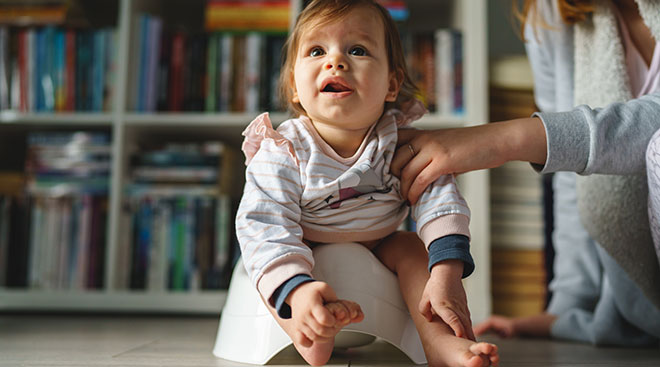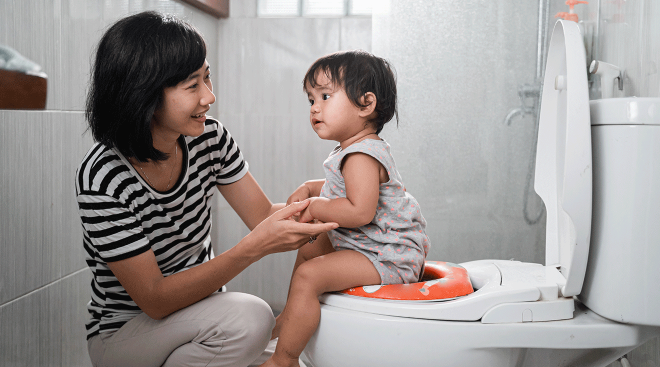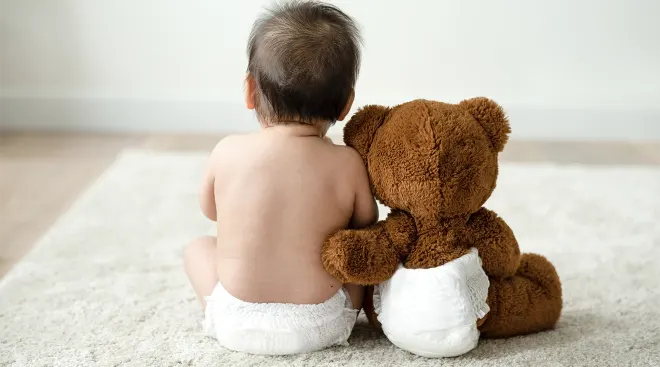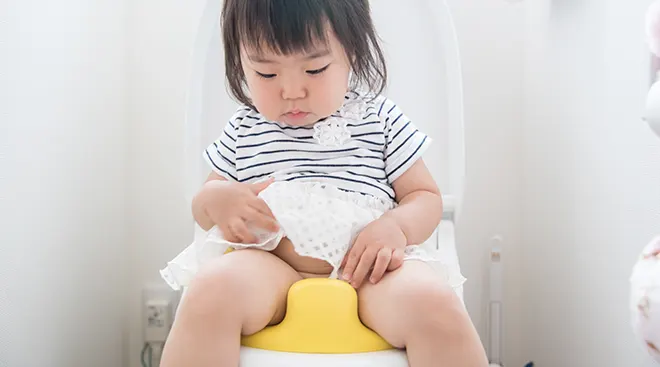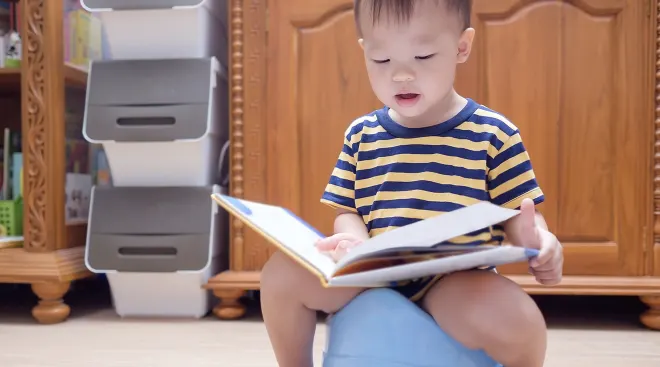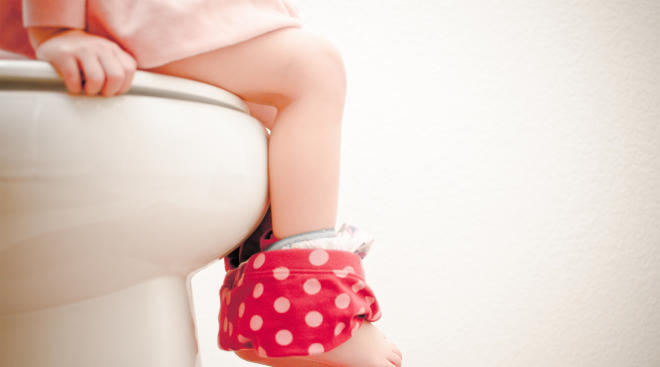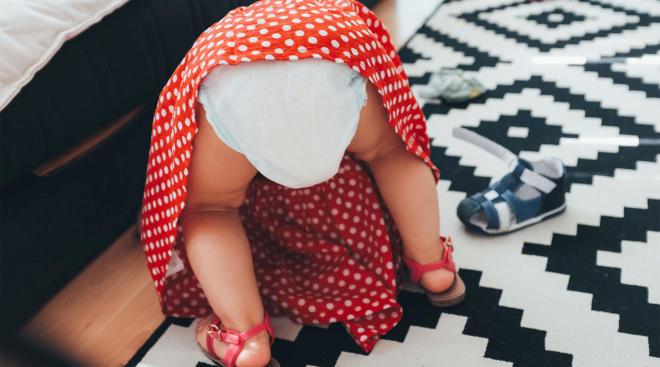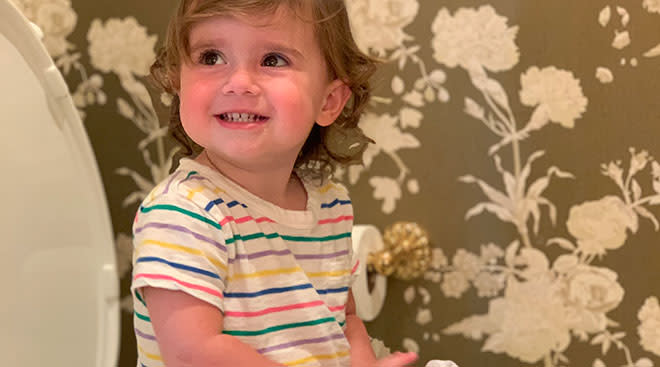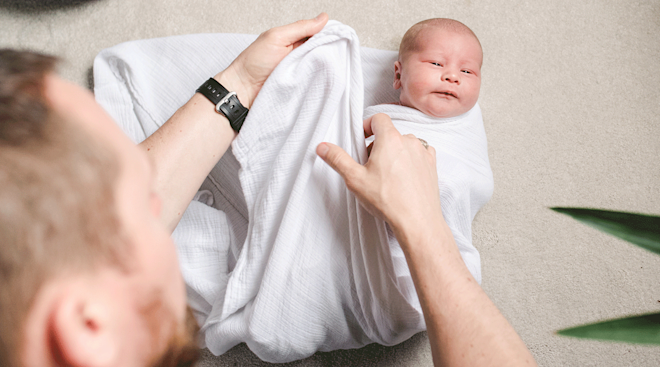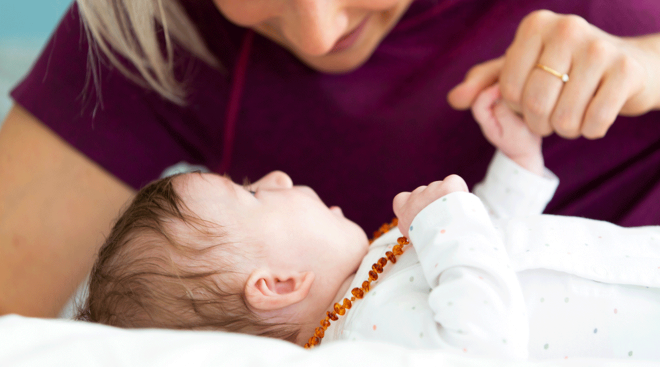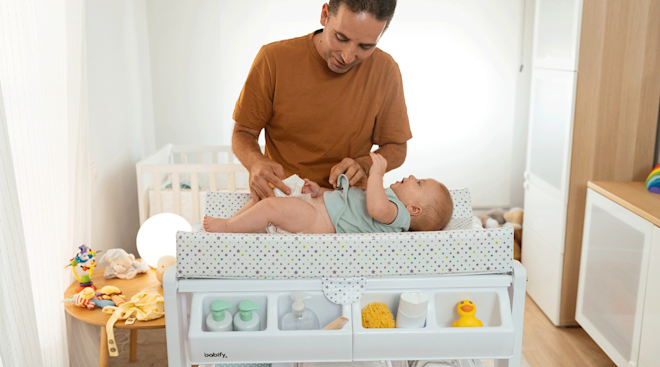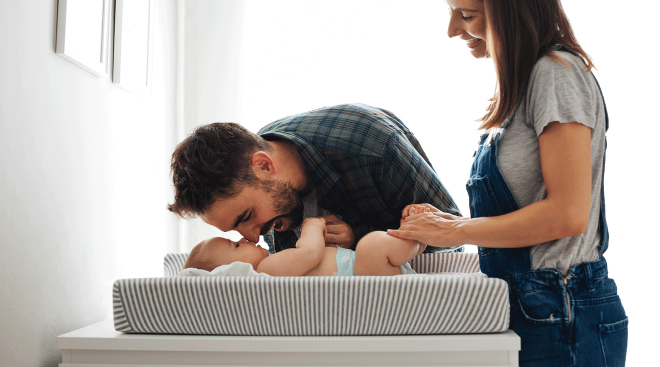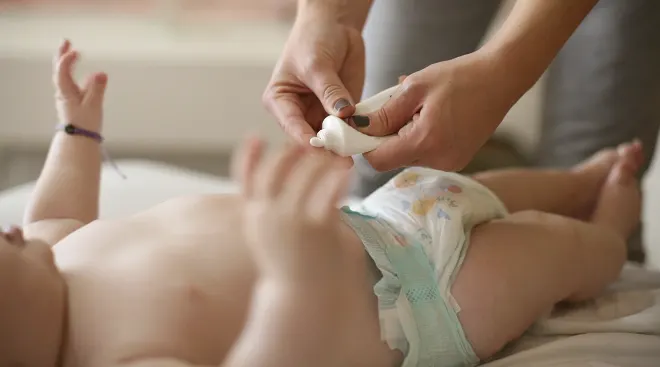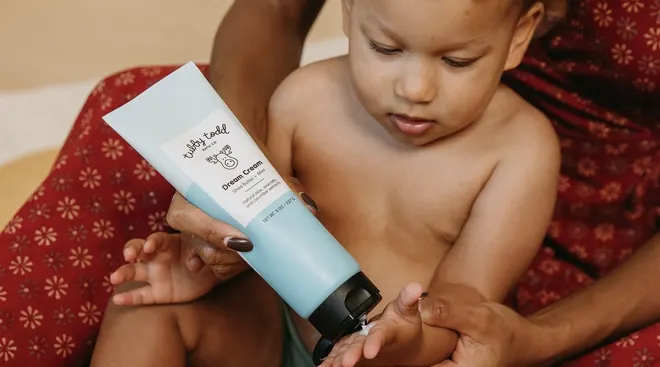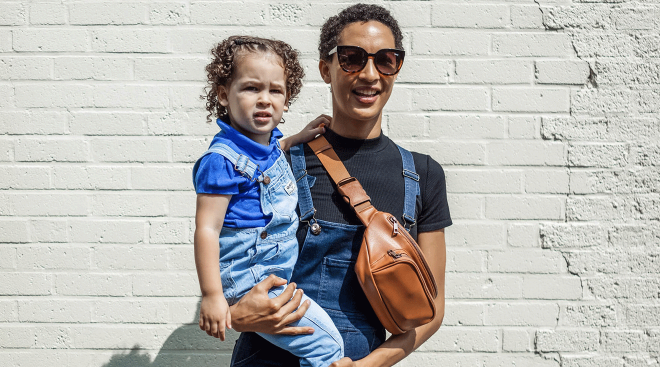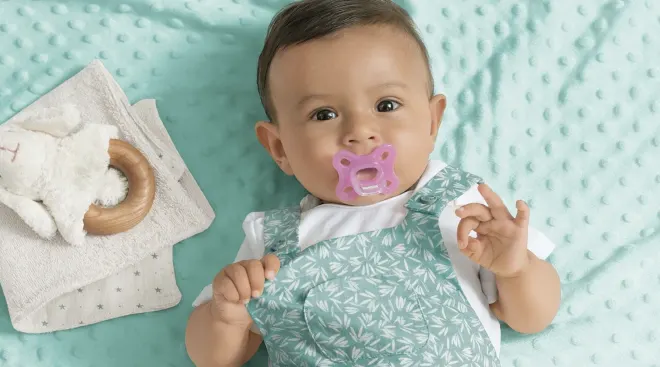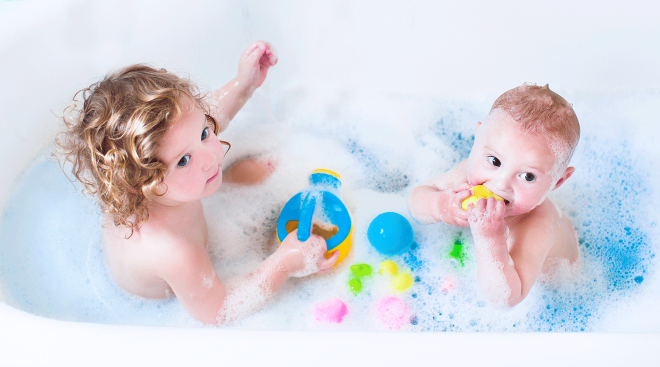Elimination Communication: How to ‘Potty Train’ Without Diapers
Let’s be real: Changing diapers isn’t particularly fun—so the idea of early potty training probably might sound tempting. But not everyone realizes (or fully believes) that it’s a plausible option. If you’ve never heard of elimination communication, you’re not alone. It’s not exactly “infant potty training” as some people think, and it’s quite different from the traditional toddler-friendly techniques most Americans are familiar with. Essentially, this method involves identifying signs that baby has to pee or poop and establishing a pattern. But exactly what is elimination communication—and is this diaper-free process right for you and your little one? We consulted with experts to learn more about this intriguing but somewhat divisive approach. Here’s what you need to know.
According to Pediatrics, elimination communication (EC) involves identifying an infant’s natural cues that signal they need to go “number one” or “number two.” Once you’ve learned to pick up on those tell-tale signs, you can effectively direct baby’s “elimination” into a potty rather than a diaper. The goal is to be able to find a pattern and predict the times your little one will need to go, instead of just assuming it’ll happen randomly throughout the day.
Although it’s often lumped into the general potty training category, the elimination communication method—sometimes referred to as natural infant hygiene—utilizes both communication and care between an infant and their caregiver, explains Michelle Swaney, CEO of The Potty School.
Infants have their own way of communicating very early, and parents quickly learn what all those unique coos and cries mean, says Sara Siddiqui, MD, a pediatrician and clinical assistant professor at Hassenfeld Children’s Hospital at NYU Langone. This method “isn’t so much about trying to get away from diapers, but learning how to identify patterns in infant elimination,” she says. What’s more, Siddiqui adds that finding this routine can help improve baby’s intestinal health.
Elimination communication vs early potty training
While the terms are used interchangeably, elimination communication and infant or early potty training are actually two different things. With elimination communication, you’re simply placing baby on a potty when you think or notice that they’re about to go, explains Quiara Smith, a pediatric pelvic health occupational therapist at Aloha Integrative Therapy in North Dakota. “The infant is not consciously understanding the urge sensation [of] a full bladder and rectum,” she says. Rather, you’re preemptively taking action. Early baby potty training, on the other hand, attempts to teach “the skill of bowel and bladder management,” which typically doesn’t emerge until around 18 to 24 months of age, she adds.
There’s no specific person credited with creating the elimination communication method, explains Swaney. “It’s a natural way that children have been cared for all over the world for generations.” Siddiqui adds that this practice remains common in Asia, Africa and parts of South America.
In her book, The Complete Guide to Potty Training, Swaney explains that culture may be the most influential factor determining what someone thinks of as a “normal” potty training age. Societal norms have a major influence on when and how a little one starts being toilet trained—whether as an infant or toddler. But in countries that predominantly use cloth diapers, the age of potty training is much lower, and it often begins before babies reach the one-year mark.
While toddler potty training might be typical here in the US, it wasn’t always—and it actually developed out of convenience. “Disposable diapers have made it easier for infants to eliminate whenever needed and as many times as necessary,” says Siddiqui. (And they haven’t been around for all that long: The first mass-marketed disposable diapers weren’t introduced to the US market until 1948.) In response, the average potty-training age has progressively tracked later and later. Most parents today start the traditional potty training process “when a toddler can start [saying] they’re ready to use the bathroom and are independent enough to perform the task,” she adds.
Weighing the pros and cons of the elimination communication method? The diaper-free approach isn’t for everyone, but if it works for your lifestyle, there are some benefits: It helps establish a routine. “Placing baby in an assisted seated position to help eliminate gas and stool would [allow] for more elimination to take place,” explains Siddiqui. This can improve the overall digestive process and prevent inconvenient middle-of-the-night pooping.
-
Siddiqui says that practicing elimination communication can help reduce colic and fussiness.
-
Fewer diapers used means less waste accumulated and less money spent.
-
Diaper rash more or less becomes a thing of the past.
-
Unlike potty training a toddler, there’s no manipulation or bribes with elimination communication. Also, when kids are potty trained at 3 and 4 years old, they can start withholding. But with a 6-month-old, there’s no cognitive process at play.
-
With elimination communication, potty use is part of the routine early on. This may make for a smoother transition to independent pottying when your child is older. “There won’t be a huge change in your child’s life—they’ll be used to the toilet being the proper and socially acceptable location from the start,” Swaney says.
If you’re considering trying elimination communication, it’s important to know that this method is sometimes considered controversial—and it comes with its fair share of skeptics.
Smith believes that most elimination communication criticism is warranted. “It’s not following typical child development for sphincter control, which is associated with feeling the urge of a full bladder or rectum,” she says. Children need to be able to relax their pelvic floor muscles and sphincter to empty themselves. “An infant is not able or ready to do this,” she adds. What’s more, she notes that, in her practice, she’s seen children who’ve gone through the elimination communication process and start withholding or refusing to go. Siddiqui adds that withholding can ultimately lead to issues of constipation or urinary tract infections. To that end, she adds that “If an infant or child is uncomfortable during the process, it’s most definitely not something that should be forced.”
While Swaney is an advocate for elimination communication, she acknowledges that there are some naysayers. “The most common criticisms are that it doesn’t work or it’s a joke,” she says. Of course, this is all about perspective and education. It’s true that these babies aren’t traditionally toilet trained; rather, their parents are trained to know how and when to facilitate potty time.
If you decide you want to give elimination communication a go, the first step is to consult with your pediatrician. They might have concerns, questions or guidance specific to your child.
Siddiqui recommends waiting a few weeks or months after baby’s arrival to start the process—once you’re “comfortable identifying and distinguishing different cues from your little one,” she says. You’ll want to have at least a relative idea of when baby poops each day. Suffice it to say that it’ll be a learning curve, but if you’re committed to the process, you (and baby) will start to get the hang of it after a while.
It’s really a pretty easy process to begin. It’s more about following your intuition and reading your little one than adhering to a strict protocol. That’s said, here are a few starter steps:
-
Identify when baby is most likely to have a bowel movement. Look for a pattern in your day—but expect to try after a feeding.
-
Look for in-the-moment clues. Is baby pushing or grunting? They may be having a bowel movement at this time.
-
Sit them on the potty. If you’ve identified some of baby’s signals or it’s after a feeding, simply position them on a small toilet or seat for a short period of time. Siddiqui says not to exceed more than one to two minutes. And know that you’ll probably need to offer physical support (never leave baby unattended).
-
Use sound. An audible cue (like a repeat sound you make) can help establish an association for baby.
This will take time and patience. Every baby responds to things differently, so be open to adapting. And if your infant seems fussy or uncomfortable, try again at another time. Whatever you decide, don’t stress the process. This is not full-fledged baby potty training; instead, try to think of it as an opportunity to bond with baby on another level. As Swaney says, “It’s not all roses. It’s a journey, but it’s one you travel with your child, each step of the way. You get to be there supporting and encouraging your child in their abilities.”
About the experts:
Sara Siddiqui, MD, is a clinical assistant professor in the department of pediatrics at Hassenfeld Children’s Hospital at NYU Langone and a pediatrician at NYU Langone Huntington Medical Group. She earned her medical degree from SUNY Stony Brook in New York.
Quiara Smith is a pediatric pelvic health occupational therapist and director of therapy at Aloha Integrative Therapy in Fargo, North Dakota. She earned her Master’s degree in occupational therapy from Samuel Merritt University in Oakland, California.
Michelle Swaney is CEO of The Potty School. She also wrote the book The Complete Guide to Potty Training.
Please note: The Bump and the materials and information it contains are not intended to, and do not constitute, medical or other health advice or diagnosis and should not be used as such. You should always consult with a qualified physician or health professional about your specific circumstances.
Plus, more from The Bump:
Navigate forward to interact with the calendar and select a date. Press the question mark key to get the keyboard shortcuts for changing dates.
































